C3.ai, Inc. (AI) on Q3 2025 Results - Earnings Call Transcript
Operator: Good day, and thank you for standing by. Welcome to the C3.ai Third Quarter Fiscal Year 2025. [Operator Instructions] Please be advised that today's conference is being recorded. I would now like to hand the conference over to your speaker today, Amit Berry. Please go ahead. Amit Berry: Good afternoon, and welcome to C3.ai's earnings call for the third quarter of fiscal year 2025, which ended on January 31, 2025. My name is Amit Berry, and I lead Investor Relations at C3.ai. With me on the call today are Tom Siebel, Chairman and Chief Executive Officer; and Hitesh Lath, Chief Financial Officer. After the market closed today, we issued a press release with details regarding our third quarter results as well as our supplemental to our results both of which can be accessed through the Investor Relations section of our website at ir.c3.ai. This call is being webcast, and a replay will be available on our IR website following the conclusion of the call. During today's call, we will make statements related to our business that may be considered forward-looking under federal securities laws. These statements reflect our views only as of today and should not be considered representative of our views as of any subsequent date. We disclaim any obligation to update any forward-looking statements or outlook. These statements are subject to a variety of risks and uncertainties that could cause actual results to differ materially from expectations. For a further discussion of the material risks and other important factors, please refer to our filings with the SEC. All figures will be discussed on a non-GAAP basis unless otherwise noted. Also, during today's call, as we refer to certain non-GAAP financial measures, a reconciliation of GAAP to non-GAAP measures is included in our press release. Finally, at times in our prepared remarks and in response to your questions, we may discuss metrics that are incremental to our usual presentation to give greater insight into the dynamics of our business or our quarterly results. Please be advised that we may or may not continue to provide this additional detail in the future. And with that, let me turn the call over to Tom. Tom Siebel: Thank you, Matt, and thank you, everyone, for joining us this afternoon to talk about our business results for the third quarter. Let me provide some kind of introductory comments. Clearly, the market for what's going on in enterprise AI is huge and it is rapidly growing. This has been - this interest has been clearly accelerated okay, by Generative AI and Agentic AI, which is becoming a large and rapidly growing business for us. Now as a matter of background, some of you will recall that we began work with Generative AI in 2020 associated with some classified work that we're doing for the United States Missile Defense Agency that I believe continues today. And so when Generative AI became - most of the world became generally aware of it, I believe, in November of 2022, we were well prepared to take advantage of this technology as we do. Now many organizations, government agencies, corporations are really kind of wrestling with the problematic issues associated with these language models and Agentic AI with which everybody on the call is familiar problems like hallucination, problems like unimodal or bimodal data sources, problems like data exfiltration, problems that are now being well documented, where we're opening up new attacks, cyberattack vectors, IP liability exposure, et cetera. Now by combining the work that we did, you'll recall that we did really billions of dollars of software engineering associated with the C3 Agentic AI platform, okay, which - where we address these issues of identity, security and factor authentication, omni modal data fusion, what have you. So by using these language models and Agentic AI in the context of the C3 platform orchestration layer, we've really solved all those problems. And so as a result, C3 Generative AI is installed today in some of the most secure installations on the planet earth. These would include United States Intelligence agencies, Department of Defense Missile Defense Agency, Coke Industries, Nucor and many others where we've solved all of these problems. And so it's - we're able to address some very interesting issues. And the range of issues that we can address is just becoming wider and wider every day, whether it's - whether we're dealing with hypersonics and space, whether we're dealing thinking about the coordination of swarms, whether we're dealing about using Generative AI to help people operate large plants or whether we're using - whether it is generative self-assisted delivery of government services, I think health impairment services, Medicare, Medicaid, what have you, it's really very interesting. And so when proposing to do something today for you that is historic, and it is - and I believe this has never been done before. So what we have done is we have taken C3 Generative AI and we loaded - we built what is really a small language model, and the small language model consists of the business results and call strip from our second quarter and the business results from our third quarter and we're going to - I'm going to let C3 Generative AI handle much of the substance of this call and brief you on the quarter, after which Hitesh will provide details on the kind of more specific financial results of the quarter. And then Hitesh and I will be available to answer any other questions you have. So ladies and gentlemen, please allow me to introduce to you for, I think, the first conference call ever done this way. Please meet C3 Agentic AI. Here is the analysis summarizing the major themes across Q2 and Q3. In Q2, C3.ai demonstrated strong financial performance and strategic growth, setting the stage for further advancements in Q3. Our revenue growth accelerated to 29% year-over-year in Q2, reaching $94.3 million, with subscription revenue increasing by 22% to $81.2 million. This growth was supported by a robust partner ecosystem, including Microsoft, AWS, Google and others, which played a critical role in driving our market leadership. The most significant development in Q2 was the expansion of our strategic alliance with Microsoft Azure, which we believe will be an inflection point in the enterprise AI industry. This partnership not only expanded our sales reach but also shortened our sales cycles, positioning us for accelerating growth. Building on the momentum from Q2, Q3 total revenue reached $98.8 million, a 26% increase year-over-year. Subscription revenue grew by 22% to $85.7 million, and our non-GAAP gross profit was $68.2 million, representing a 69% gross margin. Our non-GAAP operating loss improved to $23.1 million, better than our guidance of $38.6 million to $46.6 million. These results underscore our continued financial strength and operational efficiency. A key theme across both quarters has been the expansion and deepening of our strategic alliances, particularly with Microsoft, AWS and McKinsey QuantumBlack. In Q3, our partnership with Microsoft yielded significant results. Since the announcement at Microsoft Ignite, we closed 28 agreements across nine different industries, marking a 460% increase quarter-over-quarter. Our sales cycles with Microsoft shortened by nearly 20%, thanks to an effective co-sell motion. We have integrated with Microsoft's global sales infrastructure, running numerous partnership onboarding and joint enablement sessions. These efforts have led to a 244% year-over-year surge in our joint qualified sales pipeline with Microsoft as we pursue 621 target accounts recognized as eligible customer opportunities. This disciplined data-driven approach is already showing measurable outcomes, and we are excited about the enthusiasm we see in the field. Our expanded strategic alliance with AWS in Q3 deserves particular mention. Under the new agreement, C3.ai and AWS will focus on offering advanced enterprise AI solutions together, further enhancing our global reach and execution speed. And our alliance with McKinsey QuantumBlack announced in Q3 is another pivotal development. This partnership leverages McKinsey QuantumBlack's expertise in modern business transformation with our leadership in enterprise AI. McKinsey's track record in advising top enterprises and driving large-scale transformations complements our AI solutions, bridging the gap between strategic foresight and operational impact. In Q3, 71% of our agreements were delivered in collaboration with our partners, highlighting the importance of our ecosystem in driving our business forward. Customer success remains a cornerstone of our strategy. In Q3, we secured new and expanded agreements with clients such as Flex, Worley, New York Power Authority, Sanofi, Nucor Corporation, Holcim, Shell, ExxonMobil, GSK, Quest Diagnostics and Swift, among others. In the federal sector, we closed agreements with the U.S. Department of Defense, the U.S. Air Force, the U.S. Navy and the Missile Defense Agency. We also expanded our work with state and local governments closing 21 agreements across various states. Our focus on Generative AI continues to drive innovation and customer traction. In Q3, we closed 20 C3 Generative AI pilots with clients including Mars, Liberty Coca-Cola Beverages, the U.S. Department of Defense and various government agencies. Our success with C3 Generative AI demonstrates our ability to deliver safe, secure and reliable AI solutions that drive measurable business outcomes. A significant highlight of Q3 was our continued leadership in Agentic AI. We made further advancements in Agentic AI in Q3 and including high-quality agentic planning and orchestration, as well as agentic retrieval and reasoning over omni modal data. These innovations enhance the autonomy, accuracy and efficiency of AI models further strengthening our market position. Our latest work includes a foundational time series embedding model, which unifies and simplifies the development, deployment and maintenance of AI use cases involving time series data. This model has enabled new systems for deep integration between C3 Generative AI's agents and time series data, significantly speeding up scaling and adoption. The emergence of new, more efficient models like DeepSeek is another trend that bodes well for C3.ai. The lower cost of inference and proliferation of foundation models will accelerate AI adoption across enterprises. As the cost of inference decreases, the focus shifts from building advanced models to translating AI into applications that deliver tangible business outcomes. C3.ai is uniquely positioned to capitalize on this shift with over 130 AI applications that are enterprise-ready, specific customer wins in Q3 further illustrate our growth potential. GSK for instance is leveraging our AI solutions to better predict demand and respond to market fluctuations, while SmithRx is using C3 Generative AI to streamline member support and improve customer service. Looking ahead, the foundation we have built over Q2 and Q3 position C3.ai for sustained growth. Our strategic alliances with Microsoft, AWS and McKinsey QuantumBlack have dramatically increased our global sales reach and execution speed. As we enter Q4, all our solutions are now immediately orderable on the Microsoft, AWS and Google Cloud portals, and we can contract rapidly using their contract vehicles. This significantly shortens our sales cycles. Our partner ecosystem, combined with our leadership in Agentic AI and Generative AI sets the stage for continued acceleration in the coming years. As we enter Q4, our focus will be on ensuring the company is properly organized to expand both direct sales and services and provide support capacity to our dramatically enlarged distribution ecosystem. Fiscal years 2026 and 2027 will be about realizing continually expanded growth and market share. The market has never been larger. The opportunity has never been greater and our product family has never been stronger. The company has never been better positioned to capitalize on all of this. In conclusion, we made amazing progress last quarter, laying the groundwork to substantially increase our global distribution capacity for all our enterprise AI applications. We now have a legion of experienced enterprise cloud sales and service professionals at Microsoft, AWS, McKinsey and Google Cloud distributing and servicing our solutions globally. This inflection point for C3.ai is a growth accelerator. I am confident we have the people, the leadership and the execution plans to achieve these goals in the coming quarters and years. Thank you, C3 Agentic AI and now let me turn this over to my colleague, Hitesh Lath, the Chief Financial Officer at C3.ai for additional commentary on our business results. Hitesh? Hitesh Lath: Thank you, Tom. I will now provide a recap of our financial results and additional color on our business. All figures are non-GAAP unless otherwise noted. Total revenue for the quarter increased 26% year-over-year to $98.8 million. Subscription revenue increased 22% year-over-year to $85.7 million representing 87% of total revenue. Revenue from sale of software licenses that are demonstration versions of C3.ai applications was $28.6 million during the quarter. We sell these licenses to our distribution partners to enable them to demonstrate our software effectively to their customers and to large strategic customers to enable them to accelerate AI adoption across their companies. I will also note that our non-Baker Hughes revenue grew by 43% year-over-year in this quarter. Professional services revenue was $13.1 million. This represents 13% of total revenue during the third quarter of fiscal '25. Prioritized Engineering Services or TES revenue was $5.7 million. As we said in prior quarters, we expect the professional services revenue, including PES to generally stay within 10% to 20% of total revenue for fiscal '25. Our subscription and PES revenue combined was $91.4 million and accounted for 93% of total revenue, an increase of 18% compared to $77.5 million one year ago. Gross profit for the quarter was $68.2 million and gross margin was 69%. Gross margin for professional services remained high at over 85%. Operating loss for the quarter was $23.1 million, and our net loss for the quarter was $15.8 million. Our operating loss was substantially better than guidance due to continued focus on expense management. In particular, we elected to reduce our marketing spend, including advertising and to focus on expanding the sales organization and dramatically expanding our strategic partner ecosystem, impact of which will manifest over time. Our non-GAAP net loss per share was $0.12. Our net cash used in operating activities was $22 million. Free cash flow for the quarter was negative $22.4 million as compared to negative $45.1 million in the third quarter of last year. Free cash flow for the first nine months of the year also improved to negative $54.8 million as compared to negative $109.2 million in the first nine months of last year. We continue to be very well capitalized and closed the quarter with $724.3 million in cash, cash equivalents and marketable securities. At the end of third quarter, our accounts receivable balance was $180.4 million, including unbilled receivables of $89.8 million. Total allowance for bad debt remains at less than $650,000 and we do not have concerns regarding collections. The general health of our accounts receivables remain strong. During the third quarter, we signed 50 pilots. At the end of the quarter, we had cumulatively signed 310 pilots, of which 245 are still active. This means they are either in their original three to six month term or extended for some duration, or converted to a subscription or consumption contract or are currently being negotiated for conversion to subscription or consumption contract. We are excited about our expanding distribution network and go-to-market initiatives with Microsoft, AWS and McKinsey. We expect to continue to see some moderation in our gross margins, due to higher mix of pilots in the near term, which carry a greater cost of revenue, during the pilot phase of the customer life cycle. We also expect some moderation in our operating margin in the near term, due to additional investments we are making in our business, including in our sales force, partner ecosystem, customer support, and research and development. As we continue to make significant investments in the business. We expect to be free cash flow negative for fiscal '25, but remain on track to be free cash flow positive for Q4. Now I'll move on to our guidance for the next quarter. Our revenue guidance for Q4 of fiscal year '25, is $103.6 million to $113.6 million. For the full fiscal '25, we are anticipating revenue in the range of $383.9 million to $393.9 million. Our guidance for non-GAAP loss from operations for Q4, is $30 million to $40 million, and our non-GAAP loss from operations for the year, is expected to be in the range of $87 million to $97 million. Our guidance is predicated on the assumption of geopolitical stability. Were there to be a situation that the U.S. Government closed, the budget did not pass, or we see indications of global trade war, those could have unknown and adverse consequences on the business results. With that, I'd like to turn the call over to the operator, to begin the question-and-answer session. Operator? Operator: Thank you. [Operator Instructions] Now first question coming from the line of Timothy Horan with Oppenheimer. Your line is now open. Timothy Horan: Good morning. Thanks guys. Great job on the relationship here with Microsoft, Amazon, McKinsey. Can you give a little bit more color? What's going on with the total number of pitches that you're going on at this point and pipeline, and when do you think that will start converting to revenue? Thank you. Tom Siebel: It is converting to revenue. I believe that we're involved with just one of these companies with Microsoft, we're involved with over 600 engagements today where we are the preferred enterprise AI solution, and they are the preferred platform solution. So I mean understand that, I think this agreement was signed September 30. Memory serves you correct. We announced it in a made stage format at Microsoft Ignite in Chicago. I believe it was November 20. Not much happened between November 20, and the end of the year, because that would be the end of the quarter for Microsoft. So they were focused on their business. And then you get to the first of the year, you get to like the roughly, people get to after work when like 15th of January or whatever. And so, we've really been at this for a little bit over a month with Microsoft. And today, we're engaged in over 600 joint selling relationships with them in Europe, South America, North America, EMEA what have you in across a wide range of industries. So that's just Microsoft. Okay. And so, now we have AWS, we have this business with McKinsey, QuantumBlack is huge. And these relationships that we have are most unusual. These are not simple distribution arrangements. These are, co-selling arrangements, teaming arrangements. And it is, this occupied a lot of our attention. Okay. In the last four months. And we were, for whatever reason that we could talk about some other time. Okay. We were swarmed by these guys, and I think the right thing to do was to respond accordingly. The agreements are all inked. They are executed, they are announced and we are open for business. So it is, there's no way, know-how. This is not a growth accelerator for C3.ai. This is a genuine big deal. Timothy Horan: So the 600 engagements have only been since you've announced the deal with Microsoft? And maybe just some color how long does it usually take from initial engagement until you sign a contract? Tom Siebel: Well, we've already closed. We said how many have we closed so far. Last quarter, we closed, how many? Hitesh Lath: 28. We have closed 28 agreements in Microsoft already. Tom Siebel: 28 already in last quarter? So I mean, that's pretty quick. Timothy Horan: Great. And then just lastly, just a little bit more color on the remaining procurement obligations. What's going on with the trends there? Tom Siebel: I didn't hear the question. So if one of you guys could... Hitesh Lath: Can you repeat the question, please? Timothy Horan: Yes, just remaining performance obligations. Can you just talk about the trends there when - what we should kind of expect going forward? Hitesh Lath: Yes. The total ARPU at the end of the quarter, it was around $208 million. And as we've indicated in the past, RPO is not the leading indicator of our business. So you should continue to expect some decline in our RPO in the near term. Timothy Horan: Thank you. Operator: Thank you. Our next question coming from the line of Patrick Walravens with Citizens JMP. Your line is now open. Tom Siebel: Pat, we cannot hear you. Operator: Please check your mute button. Patrick Walravens: My apologies. So let me add my congratulations on the - all the partnership momentum. Tom, would you be okay talking about the note that you published on February 18. So sorry - but if you could just talk about what the health setback was, and what steps you're taking in terms of running the business, I think that would be great? Tom Siebel: Yes. I came down with something like flu-like symptoms after Christmas, which lasted some weeks and that kind of degenerated into kind of a pretty bad flu like symptoms, and the - so I was sick. And then that turned out was a precursor for an autoimmune disease, that autoimmune disease has been identified as - I'm sorry, giant cell arteritis, okay? And so when we get into February, this autoimmune disease kicks in, and attacks my optical nerve. And so my optical paths kind of fried and, so my vision is impaired. Now as it relates to operating the business, it has so - Tom has to learn some new skills, and we put the accommodations in place. I mean, you know me to be intimately familiar with the details of this business, okay? And you can imagine that we spent exacting detail with this management team or how we were reorganizing this company around this new opportunity that's here. We've done the same - we have the same meeting with all of our salespeople around from the world. I spent a lot of time personally with all of the - a lot of time personally, okay, with all of the partners that we've discussed. I put the accommodations in place for - about really the only thing I can't do is read e-mail. So the - so we put the competition in place, there is somebody here with a hot computer, who reads the e-mails to me. I comment, I respond, I approve, I don't prove what have you. I am here in the office. I am managing the business every day. In the short-term, my travel, the medical community has me on kind of - they don't want me going real far or a high altitude, and so we've made arrangements for Jim Snabe, who you most certainly know or know of, and one of our more distinguished directors. Jim, of course, was the Co-CEO of SAP, Chairman of Maersk, Chairman of Allianz, Chairman of Siemens. And so Jim assumed the role as a special assistant to the Chief Executive, okay? And he's filling in for the events that Tom can't do, let's say, I was supposed to be at VivaTech at Paris, or what have you, or maybe we need to do an executive customer review at Shell in London. And so this is how it's organized. I am fully engaged managing details of the business every day, as you know me a little bit, and you know I'm generally in touch with those details. My health is excellent, okay? So beyond all of the infirmities that I had, I just can't see. And the show that - how - is that answer acceptable? Or would you like to know more? Patrick Walravens: No, that is a very complete answer. Everyone on this call is wishing you a speedy recovery, Tom. Thank you so much for the details. Tom Siebel: Thank you, buddy. Operator: Thank you. Our next question coming from the line of Austin Dietz with UBS. Your line is now open. Austin Dietz: Yeah, Tom, best of luck on the health front. And then, yes, a question for Tom or Hitesh. Within Pro Services this quarter, the services fees outperformed by, I think, $4 million or so relative to the first half of the year. I think it was up $6.5 million, or so compared to the year ago quarter. Can you maybe just speak to what drove the services outperformance this quarter? Hitesh Lath: Yes. So this is Hitesh. Our professional services revenue, it includes prioritize engineering services revenue, as well as revenue from consulting services, paid installation services and training services. So we saw an uptick in revenue from consulting services, paid implementation services, and training services during the quarter. Austin Dietz: Okay. Got it. And then on - it was helpful color on the demonstration licenses piece this quarter. It feels like those demonstration licenses, have really been outperforming pretty considerably over the last few quarters. So I guess, like why are we seeing so much outperformance in demonstration licenses this year? Sort of what's been driving that? And how should we think about those going forward? Tom Siebel: This is Tom. Let me comment on this. I mean come guys. I mean I don't know how many salespeople we just took on, okay, at Azure and AWS. But I believe it's tens of thousands, okay? And the - and they have a very, very complex bag of technology that they need to sell whether they're selling all these fabrics or C3 buckets, or all these various tools in the widgets they sell now we're selling solutions, okay? We're selling predictive maintenance. We're selling reliability. We're selling predictive maintenance for furnaces, for polyethylene facilities. We're selling supply chain optimization for consumer packaged goods companies. And so, it is absolutely imperative, okay, that we arm these people with complete sales kits, not only sales presentation, Q&A, a generative AI for asking for answering questions. But also demonstration software so that they can go kick in the door, and do the first demo to the customer on their own, and then we can come in. So I mean we were simply overwhelmed by interest in big, important people organizations in the last three, four months. And for us not to arm them, with demonstration licenses is just not rational. And - so now the way that the way that the demonstration licenses. Do not have continuing performance - ongoing performance obligations, so that the way that they work under ASC 606 is you recognize the revenue in the period in, which they're delivering. But that was a must-do to make these people effective. And I mean they're not selling on their own, they're selling with us, okay? But this shows them, so we're there on the sales call, we're there are on the demo, we're are there on the statement of work, where they're working on making the pilot successful, but also they need to be able to operate independently of us, and this is a absolute critical success factor. And so it did result in an increase in that form of revenue. Austin Dietz: Awesome. Thanks, Tom. Thanks, Hitesh. Hitesh Lath: Thank you. Operator: Thank you. And I would now like to turn the conference call back to Mr. Seibel for any closing remarks. Tom Siebel: Ladies and gentlemen, thank you so much for your time, and continuous attention. It's difficult to describe how exciting it is here, and it is - it's - we are involved in some of the largest, the most complex and most fascinating enterprise AI deployments on earth. We - and it's - this is - I assure you, it's the professional experience of a lifetime, and I think we are on the verge of building one of the world's great companies. So thank you for your attention today, and we look forward to keeping you posted on our progress as we power forward. Thank you all. Operator: This concludes today's conference call. Thank you all for participating, and you may now disconnect.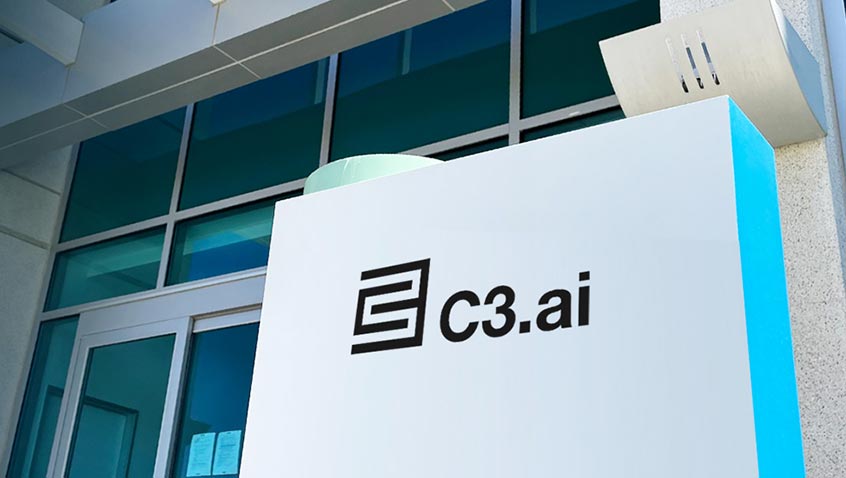
C3.ai's Market Performance and Analyst Insights
- C3.ai faces a price target of $16 from UBS, slightly below its current trading price, indicating potential overvaluation.
- The company reported a significant revenue shortfall in its fiscal first-quarter results, with a larger-than-expected loss per share.
- Recent withdrawal of full-year fiscal 2026 guidance by C3.ai could signal uncertainties in future performance, affecting investor confidence.
C3.ai, listed on the NYSE under the symbol AI, is a company that specializes in providing artificial intelligence software solutions. It caters to various industries, including energy, financial services, and healthcare. The company faces competition from other tech giants in the AI space, such as IBM and Microsoft.
On September 4, 2025, Radi Sultan from UBS set a price target of $16 for AI. At that time, AI's stock was priced at $16.68, indicating a price difference of approximately -4.08% from the target. This suggests that the market may have been overvaluing the stock compared to the analyst's expectations.
Recently, C3.ai's stock experienced a decline following the release of its fiscal first-quarter results. The company reported a larger-than-expected loss of $0.37 per share and generated revenue of $70.3 million, which was significantly below the anticipated $104.2 million. This shortfall in revenue highlights potential challenges the company may face in meeting market expectations.
The stock is currently priced at $15.46, reflecting a decrease of 7.31% or $1.22 today. During the trading day, the stock fluctuated between a low of $14.80 and a high of $16.24. Over the past year, AI's stock has seen a high of $45.08 and a low of $14.70, indicating significant volatility in its share price.
C3.ai's market capitalization is approximately $2.02 billion, with a trading volume of 29.07 million shares. The company has also withdrawn its full-year fiscal 2026 guidance, which may signal potential uncertainties in its future performance. This move could impact investor confidence and contribute to the stock's recent decline.
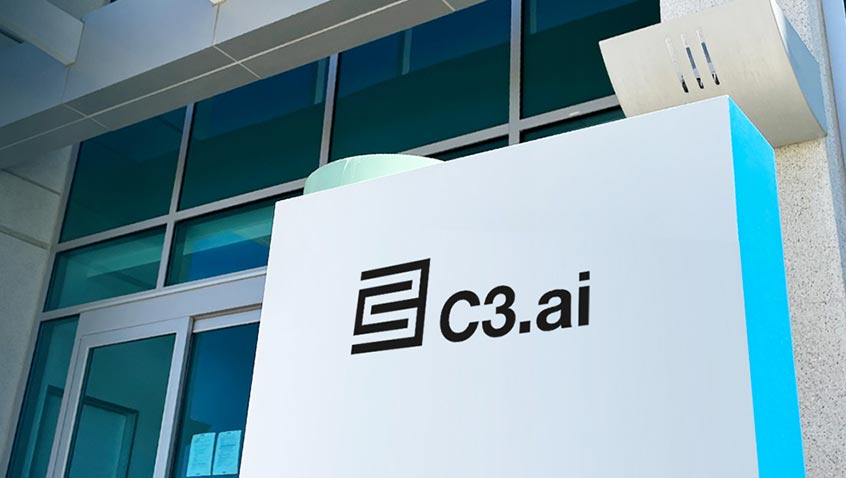
C3.ai, Inc. (NYSE:AI) Faces Challenges Despite Leadership Change
C3.ai, Inc. (NYSE:AI) is a prominent player in the enterprise AI application software sector. The company focuses on providing AI solutions that help businesses enhance their operations. Despite its innovative offerings, C3.ai faces stiff competition from other tech giants in the AI space. The company recently reported its financial results for the fiscal first quarter ending July 31, 2025.
On September 3, 2025, C3.ai reported an earnings per share (EPS) of -$0.37, slightly better than the estimated -$0.38. This marks a significant increase in losses compared to the previous year's loss of $0.05 per share. Despite the negative EPS, the company achieved an earnings surprise of 2.63%, as highlighted by Zacks. In the previous quarter, C3.ai also reported a smaller loss than expected, resulting in a 20% earnings surprise.
C3.ai's revenue for the quarter was approximately $70.3 million, falling short of the estimated $93.9 million. This represents a decline from the $87.21 million reported in the same quarter the previous year. The revenue shortfall led to a 14% drop in the company's share price during extended trading. Despite this, C3.ai has exceeded consensus revenue estimates three times in the last four quarters.
The company's financial metrics reveal some challenges. C3.ai has a price-to-sales ratio of 5.61 and an enterprise value to sales ratio of 5.19, indicating the market's valuation of its sales. However, the negative earnings yield of -12.99% and the enterprise value to operating cash flow ratio of -48.76 suggest potential issues in generating cash flow from operations. In a significant leadership change, C3.ai appointed Stephen Ehikian as the new CEO, effective September 1. Ehikian, a seasoned tech executive, has previously built two companies acquired by Salesforce. He expressed confidence in C3.ai's position in the AI landscape, highlighting the company's unmatched platform and applications.
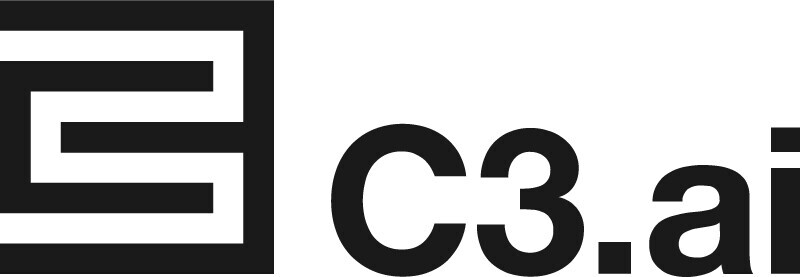
C3 AI's Stock Downgrade and Performance Overview
- Oppenheimer downgraded C3 AI (NYSE:AI) from Outperform to Perform due to concerns about the company's recent performance and future prospects.
- CEO Tom Siebel described the company's sales execution as "completely unacceptable," leading to a reorganization of their sales and services.
- The stock has experienced significant volatility, with a recent price increase of $0.44, indicating some market optimism despite the downgrade.
C3 AI, listed on the NYSE under the symbol AI, is a company that specializes in providing artificial intelligence software solutions. On August 12, 2025, Oppenheimer downgraded C3 AI's stock from Outperform to Perform, with the stock priced at $16.91 at the time. This downgrade reflects concerns about the company's recent performance and future prospects.
CEO Tom Siebel recently addressed these concerns on 'Closing Bell Overtime', describing the company's sales execution as "completely unacceptable." This has led to a reorganization of their sales and services to improve performance. The stock has seen a recent price increase of $0.44, a 2.67% rise, indicating some market optimism.
Despite the recent price increase, C3 AI's stock has experienced significant fluctuations. Today, it has ranged from a low of $16.16 to a high of $17.14. Over the past year, the stock has seen a high of $45.08 and a low of $14.70, highlighting its volatility. This volatility may have contributed to Oppenheimer's decision to downgrade the stock.
C3 AI's market capitalization is approximately $2.21 billion, with a trading volume of 18,024,756 shares. This indicates a high level of investor interest, despite the challenges the company faces. The ongoing restructuring efforts aim to address these challenges and improve the company's overall performance.
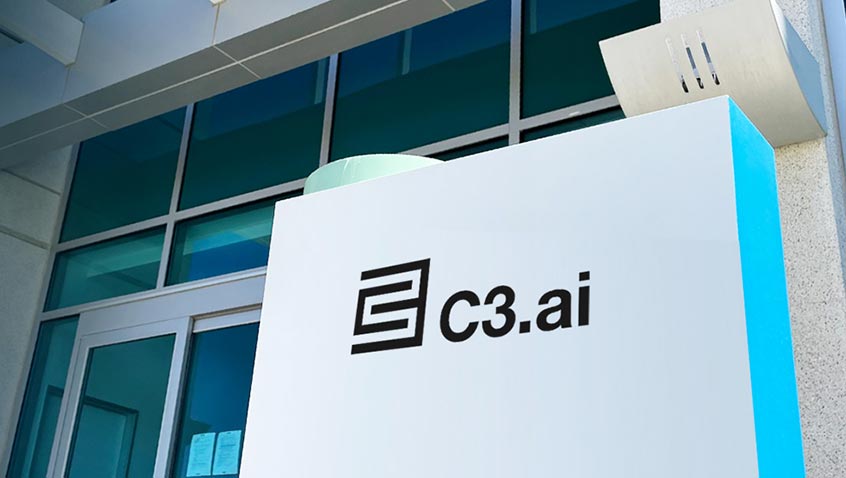
C3.ai: A Deep Dive into Its Financial Health and Market Position
- C3.ai (NYSE:AI) reported a 25% increase in revenue, reaching $389 million in fiscal 2025 Q4, showcasing its strong position in the AI sector.
- The company faces profitability challenges with a negative P/E ratio of -11.96 and an earnings yield of -8.36%, yet maintains a low debt-to-equity ratio of 0.0052.
- Despite a 26% decline in stock price in 2025, C3.ai anticipates 20% revenue growth in the current fiscal year, underlining its growth potential amidst financial hurdles.
C3.ai, trading as NYSE:AI, is a prominent player in the artificial intelligence sector. Founded in 2009, the company offers a wide range of AI applications to businesses across 19 industries, including financial services and healthcare. Despite its initial stock surge post-IPO in 2020, the stock has since declined significantly, yet remains attractive due to its growth potential.
On June 9, 2025, Witteveen Merel, Senior Vice President of Operations at C3.ai, sold 1,710 shares of Class A Common Stock at $26.23 each. This transaction leaves Merel with 9,225 shares. This sale comes amid a challenging year for C3.ai's stock, which has declined by 26% in 2025, despite improvements in company performance.
C3.ai's stock experienced a 20% surge on May 29, 2025, following the release of its fiscal 2025 fourth-quarter results. The company reported $389 million in revenue, a 25% increase from the previous year, exceeding analysts' expectations. This strong performance highlights C3.ai's strategic positioning in the AI sector, serving both commercial and government clients.
Despite these positive developments, C3.ai faces challenges in profitability. The company has a negative price-to-earnings (P/E) ratio of -11.96 and an earnings yield of -8.36%, indicating negative earnings. However, its low debt-to-equity ratio of 0.0052 suggests minimal reliance on debt, and a strong current ratio of 6.74 indicates a robust ability to cover short-term liabilities.
C3.ai's future outlook remains optimistic, with the company anticipating a 20% revenue growth in the current fiscal year. While the stock's price-to-sales ratio of 9.11 suggests investors are willing to pay a premium, the enterprise value to operating cash flow ratio of -102.83 highlights challenges in generating positive cash flow. Despite these hurdles, C3.ai's solid growth and substantial opportunities make it a promising investment.

C3.ai (NYSE:AI) Director Sells Shares, Stock Performance Analysis
- Director Richard C. Levin sells 6,000 shares of C3.ai, leaving him with 161,664 shares.
- Shares of C3.ai have risen by 18.3% over the past month, outperforming the S&P 500 and the IT Services industry.
- The company's market capitalization stands at approximately $3.23 billion, with a significant trading volume of 9,096,333 shares.
C3.ai, listed on the NYSE under the symbol AI, is a prominent player in the artificial intelligence sector. The company specializes in providing AI software solutions that help businesses enhance their operations. Recently, Richard C. Levin, a director at C3.ai, sold 6,000 shares of Class A Common Stock at $26.31 each. This transaction, reported under Form 4, leaves Levin with 161,664 shares.
C3.ai has been gaining attention on Zacks.com, with its shares rising by 18.3% over the past month. This increase surpasses the Zacks S&P 500 composite's growth of 6.1% and the Zacks Computers - IT Services industry's gain of 5.1%. Despite this positive trend, the stock's price today is $24.97, reflecting a 6.09% decrease, or $1.62 drop.
The stock's trading range today has been between $24.86 and $26.43. Over the past year, C3.ai's stock has fluctuated significantly, with a high of $45.08 and a low of $17.03. The company's market capitalization is approximately $3.23 billion, and the trading volume today is 9,096,333 shares.
While media releases or rumors can cause short-term price changes, long-term investment decisions are guided by fundamental factors. At Zacks, changes in earnings estimates are crucial for understanding a company's future performance. This focus on earnings projections helps investors make informed decisions about C3.ai's stock trajectory.
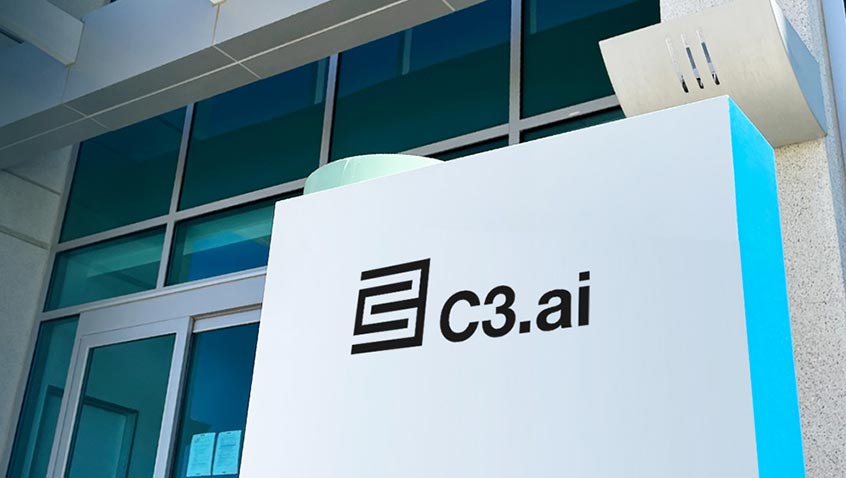
C3.ai, Inc. (NYSE: AI) Earnings Overview and Financial Health
- C3.ai reported an EPS of -$0.16, surpassing the estimated EPS of -$0.20, marking a 20% earnings surprise.
- The company's revenue for the quarter was approximately $108.7 million, exceeding estimates and indicating a 25% year-over-year growth.
- Despite a negative P/E ratio, C3.ai showcases strong liquidity with a current ratio of 6.74 and minimal reliance on debt, evidenced by a debt-to-equity ratio of 0.0052.
C3.ai, Inc. (NYSE:AI) is a prominent player in the enterprise AI application software sector. The company focuses on providing AI solutions to various industries, enhancing operational efficiency and decision-making processes. C3.ai competes with other tech giants like Microsoft, AWS, and Google Cloud, with whom it has also formed strategic alliances to bolster its market presence.
On May 28, 2025, C3.ai reported its earnings, revealing an EPS of -$0.16, which was better than the estimated EPS of -$0.20. This performance marks a 20% earnings surprise, as highlighted by Zacks. The company has consistently exceeded consensus EPS estimates over the past four quarters, showcasing its ability to outperform market expectations.
C3.ai's revenue for the quarter ending in April 2025 was approximately $108.7 million, surpassing the estimated $105.8 million. This represents a 25% increase from the previous year's $86.59 million, indicating significant growth. The company has consistently outperformed consensus revenue estimates in the last four quarters, reflecting its strong market position.
Despite a negative P/E ratio of -10.65, C3.ai maintains a price-to-sales ratio of 8.11, suggesting investor confidence in its sales potential. The enterprise value to sales ratio is 7.78, indicating a favorable valuation relative to sales. However, the enterprise value to operating cash flow ratio is -91.12, highlighting challenges in generating positive cash flow.
C3.ai's financial health is supported by a low debt-to-equity ratio of 0.0052, indicating minimal reliance on debt. The current ratio of 6.74 suggests strong liquidity, enabling the company to cover short-term liabilities effectively. These metrics underscore C3.ai's financial stability despite its current unprofitability.

C3.ai (NYSE:AI) Faces Financial Challenges Despite Growth Prospects
- C3.ai's quarterly earnings are anticipated to show a 25% increase in revenue, but the company faces challenges with widening losses and uncertain conversion rates of pilot projects.
- The company's financial metrics reveal a negative P/E ratio of -10.51 and a strong current ratio of 6.74, indicating mixed financial health.
- Investors are concerned about C3.ai's cash flow issues, highlighted by a significantly negative enterprise value to operating cash flow ratio of approximately -89.88.
C3.ai, listed on the NYSE under the symbol AI, is a prominent player in the artificial intelligence sector. The company provides AI software solutions that help businesses improve their operations. Despite its strong growth in recent years, C3.ai faces challenges with widening losses and uncertain conversion rates of pilot projects, which could affect its profitability.
On May 28, 2025, C3.ai is set to release its quarterly earnings. Wall Street estimates the earnings per share to be -$0.20, with projected revenue of approximately $107.8 million. The company anticipates a 25% increase in revenue for the fiscal fourth quarter, driven by the growing adoption of AI by businesses. However, the enthusiasm surrounding the stock has waned, leading to a decline of over 30% this year.
C3.ai's financial metrics reveal some challenges. The company has a negative price-to-earnings (P/E) ratio of -10.51, indicating negative earnings. The price-to-sales ratio is about 8.00, suggesting investors are willing to pay $8 for every $1 of sales. The enterprise value to sales ratio is slightly lower at 7.67, reflecting the company's valuation including debt and excluding cash.
Despite these challenges, C3.ai has a strong current ratio of about 6.74, indicating a robust ability to cover short-term liabilities with short-term assets. The debt-to-equity ratio is very low at approximately 0.0052, suggesting minimal reliance on debt financing. Investors are closely watching how the company addresses its cash flow issues, as highlighted by its significantly negative enterprise value to operating cash flow ratio of approximately -89.88.







